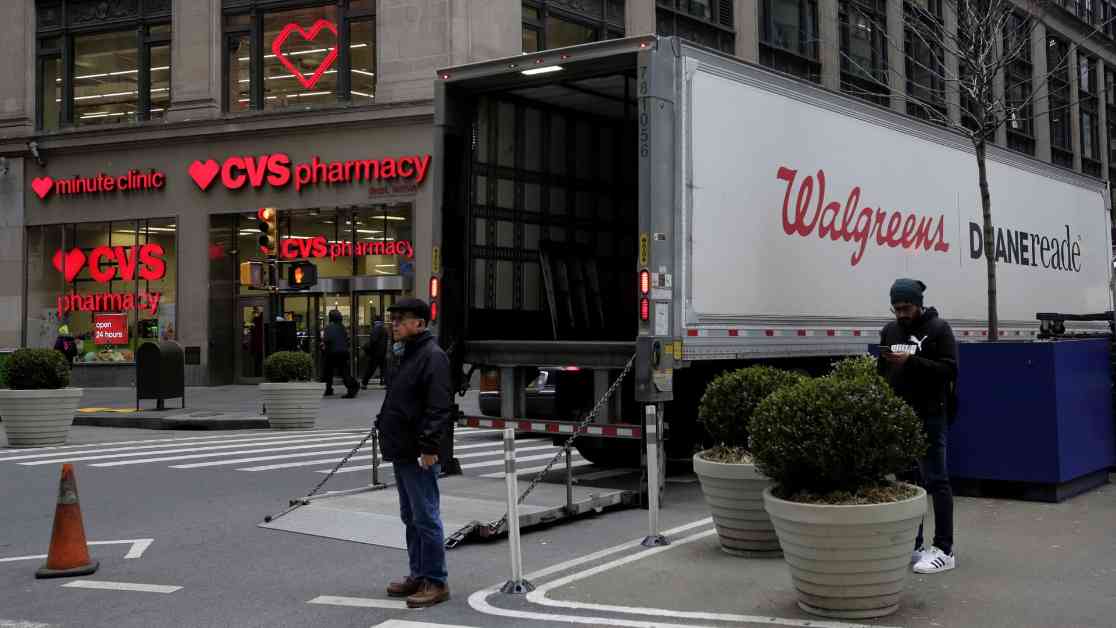The retail pharmacy industry is facing significant challenges, as evidenced by the struggles of giants like Walgreens and CVS. These pharmacy chains, once staples in communities across the United States, are now grappling with a myriad of issues that are impacting their bottom line and forcing them to rethink their strategies.
One of the key challenges faced by Walgreens and CVS is the declining profitability of their retail pharmacy businesses. Prescription drug reimbursement rates have fallen, putting pressure on the margins of these companies. Pharmacies purchase medications from distributors and are reimbursed by pharmacy benefit managers (PBMs), who negotiate discounts with manufacturers on behalf of insurers. The largest PBMs handle the majority of prescriptions in the U.S., leaving pharmacies with little negotiating power and facing lower reimbursement rates that sometimes do not cover the cost of dispensing a prescription.
This pressure on margins has been particularly pronounced for Walgreens, with its U.S. retail pharmacy unit operating at a negative 5% margin last year. CVS, on the other hand, has a slight advantage due to its ownership of a PBM, Caremark, which helps offset some of the margin pressure. CVS has introduced a new pharmacy reimbursement model called CostVantage to address this issue, but its effectiveness remains to be seen.
In addition to reimbursement challenges, retail pharmacies are contending with increased competition from e-commerce rivals, discounters, and big-box retailers. The rise of online shopping has put pressure on traditional brick-and-mortar pharmacies like Walgreens and CVS, whose online retail presence has lagged behind competitors like Amazon, Walmart, and Target. Consumers are increasingly price-conscious, opting to shop at retailers offering lower prices for essential items.
Furthermore, the pandemic has highlighted existing issues within the retail pharmacy industry, such as burnout among pharmacy staff due to understaffing and increasing workloads. As the retail pharmacy model faces scrutiny, companies like Walgreens and CVS are being forced to reevaluate their strategies and adapt to changing consumer habits and market dynamics.
To address these challenges, Walgreens and CVS are implementing various initiatives to stay competitive and improve profitability. Walgreens has been experimenting with smaller-format stores that focus on convenience and speed through digital pickup and grab-and-go solutions. CVS has expanded its private-label brands and loyalty program to attract customers and is integrating primary-care centers alongside its pharmacies to offer a broader range of services.
Despite these efforts, both Walgreens and CVS have had to make tough decisions to shore up profits. Walgreens announced plans to close a significant number of its U.S. stores, while CVS has already shuttered 851 stores as part of its plan to close 900 stores over a three-year period. While store closures may help right-size their businesses, they could also exacerbate issues in underserved communities where access to pharmacies is already limited.
Looking ahead, the future of the retail pharmacy industry remains uncertain. Retail pharmacies are unlikely to disappear entirely, given the essential role they play in the healthcare system. However, they may need to evolve and adapt to changing consumer preferences and market dynamics. This could involve increasing their online presence, rethinking their product offerings, and exploring new models of delivering healthcare services to patients.
As Walgreens, CVS, and other retail pharmacy chains navigate these challenges, it is clear that the industry is at a crossroads. The decisions they make now will shape the future of retail pharmacy and determine their long-term viability in an increasingly competitive landscape.






















